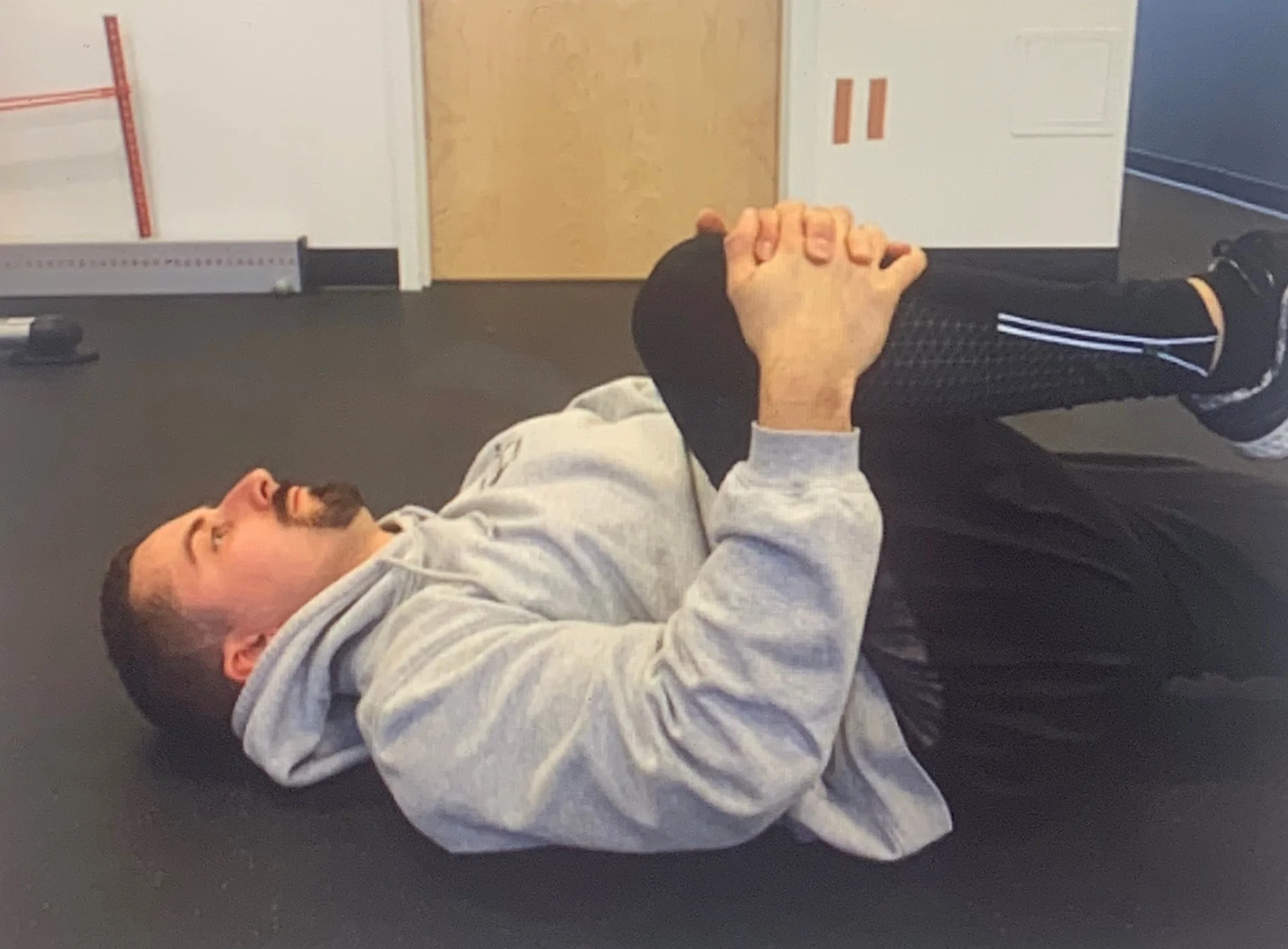Are You Experiencing Hip Pinching During Squats?
The squat is a foundational movement pattern that can be useful for building strength, speed, endurance, and decreasing risk for injury. Many times, athletes will complain of a tightness, or pinching feeling in the front of their hip at the bottom of the squat.
So, more often than not, they go and stretch their hip flexor to help to alleviate that tightness. Then, they go and squat again, but the tightness is only temporarily relieved or there has been absolutely no change whatsoever.
Then, they keep trying to stretch it, squat through it, or try some other remedy.
For potential reasons near the hip that may be contributing to this “pinching” feeling, check out my guest post at Dr. John Rusin’s website, found here .
You can also check to see if you have full hip flexion mobility. To do that, lie on your back and place one foot flat on the ground. Then bring the other knee up to your chest while keeping your back flat on the ground.

If you cannot bring your thigh to your ribs, you may be limited in your hip flexion mobility. Even if you can and you feel the pinch in your hip, tissues may be irritated.
But, if after reading that post, you are still experiencing the same hip pinch, we need to look elsewhere.
It may not be that hip/lumbopelvic complex that may be contributing to that pinching sensation.
So then, what could it be?
Well, check the ankle.
Knee-to-Wall Ankle Mobility Test
A quick and easy test to see if you have adequate ankle mobility for squatting is the Knee to Wall Ankle Mobility Test.
How to Perform This Test:
- Start with your 1st toe 4 inches away from the wall.
- Make sure not to overpronate.
- Try to touch your knee to the wall without letting your heel come off the ground.
If you can touch the wall, you have adequate ankle mobility for squatting.
If you can’t, check out my other guest post at Dr. John Rusin’s website found here.
The reason that ankle mobility is so important if a hip pinch is present is that if the ankle can’t dorsiflex adequately throughout its range of motion, another joint in the body has to move more to descend into the squat.
Enter the hip! If there is limited ankle dorsiflexion, the hip may have to flex more in order to get to depth in the squat. The hip may have full mobility when assessed passively, but if the ankle is not moving properly, the hip may have to go into unavailable ranges of motion and in turn causing a pinch in the front of the hip.
In Closing: How to Solve Hip Pinching
So, if you are dealing with a hip pinch with squatting it may not be the hip flexor. Don’t forget to make sure your limited ankle mobility isn’t beating up your hip joint.
Tags:

July 16, 2019


